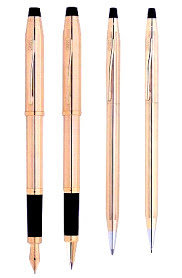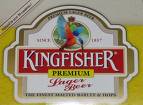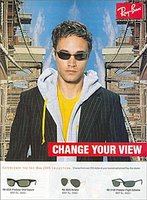Dr. Kotler is SC Johnson & Son Distinguished Professor of

International Marketing at Kellogg's School of Management at NorthWestern University. Dr Kotler is an Economist by education with Masters in Economics from University of Chicago and a PhD in Economics from MIT. He did his Post Doctoral Research In Mathematics from Harvard and in Behavioral Science from Chicago. Dr Kotler has around 35 books to his credit and has published more than 130 articles in international journals.
The first edition of Marketing Management was released in 1967. Prof.Kotler in an interview published in the book " Conversations with Marketing Masters" illustrates the origin of this iconic book. He recalls that at that time, he found most of the marketing books lacking theory and being shallow. He effectively understood the need for an organised and a scientific study of the marketing function. To quote from the book "They contained lists of the traits of good salespeople,the role of warehouses, a description of consumer demographics, and other definitions and lists. This was market anatomy but not market physiology."
Dr Kotler gave a new perspective to marketing in his first book by giving a behavioral,mathematical and consumer oriented view. He introduced new concepts and in a way made the theory more related to practice. Kotler gave a structure to the study of marketing. Kotler also was considered to be the first to define marketing.
In his

book, Kotler used the framework of 4 P's of Jerry McCarthy. McCarthy had authored the book Basic Marketing which was the popular textbook at that period of time,but 4Ps became famous through Kotler. The first edition became very popular and the rest as they say is history.
Prof. Kotler was teaching Economics during his early stages in his career. He was introduced to marketing during his post doctoral research in Harvard. He was in a group that studied the application of mathematical models in business decision making especially in marketing. That kindled the desire in him to explore the science of marketing. Dr. Don who was the Dean at Kellogg's ignited the love for marketing in Kotler who then took up teaching in marketing at the Northwestern university.
The success of the book Marketing Management is the testimony of the author walking the talk. Even after 38 years of the launch, Marketing Management is considered as the bible of marketing. The book itself is a case study on " How to build a successful brand".
The brand practiced all that is being preached by Prof. Kotler. All the 4 P's are managed with perfectio

n and the product is being consistently adapted with the changing world. It is not that Kotler's book is not having any competition. There are innumerable books written by Professors of high stature and calibre than Kotler. Even there are books written by Professors who taught Kotler. But none of those books have the brand equity of Kotler. The reason is simple : None of the books changed with times .
Have a look at the editions of Marketing Management :
1967- First
1971,1976,1980,1984,1988,1991,1994,1997,2000 ( Millennium ),2003, and
2006 ( 12th edition)
No other marketing text books can boat about this much editions. The other differentiating factor is that these editions are not reprints, the content and the examples are updated and made contemporary. Kotler also does not hesitate to make a drastic change in his approach for the new editions. That makes each editions new and often compels a student of marketing to buy every editions because every editions are new.Every new editions capture the changes that happens in the marketing world.
Another reason that propelled this success of this brand is the ability of the author to explain concepts in a simple style. By reading marketing, one gets the impression that it is simple and not a rocket science. There is no alpha beta theta or formulas or equations. Even a non management student can understand the concepts without the help of a teacher. That may be the reason why there are no Management Development Programmes titled " Marketing for Non Marketing executives" while there are finance for non finance executives and so forth. Prof. Kotler once remarked " Marketing is simple to understand and difficult to practice". But this brand is an example of practicing the talk.
The book also was adapted to different markets not only by having translations but also changing the examples and cases to make the concepts more clear to the target audience. So when Kotler teaches the strategy of GLOCAL , he practices it. The book priced reasonably is available across the market thus ensuring that all Marketing Mixes are perfectly balanced.
Of these 12 editions, 10 th edition of Millennium edition is the most theoretically strong edition ( my opinion). The edition clearly takes the book to a new paradigm ( if i can use that jargon). 11th edition reinforce the new thinking.
Sometimes I used to wonder , what will happen to Marketing Management after Kotler? Will it just fade into history?
Marketing Management 12th edition was the answer.12th edition was a surprise for every one. The brand now has been completely renovated .The book for the first time had a co-author in Professor K

evin Lane Keller. Dr. Keller is E.B Osborn Professor at Tuft School of Business.Keller is considered to be a Pioneer in Brand management. A young genius, Keller's book is widely used text in the Brand Management course.
The new edition of the book is a marked deviation from the rest of the collections. The book puts more emphasis on brand and delves deep into the concepts of customer value but without losing the Kotler touch. The new edition assures the continuity of this brand for the new generation.
The usual complaint that marketing teachers face in India was that students feel that the text books are westernised and has seldom any relevance to Indian market. I used to have tough time convincing the students to understand the universal relevance of marketing concepts.
2007 saw the adaptation of Kolter's text to Indian market.The new book Marketing Management : South Asian perspective has two Indian professors Abraham Kosy and Mithi Jha ( IIM A and IIM B) co-authoring Kotler and Keller.
A perfect gentleman he is ,Prof. Kotler deny that he ever marketed his book. He describe the book as an outcome of his Romance for Marketing.
 nd will have the entire apparel range from Shirts, trousers, jackets and suits.
nd will have the entire apparel range from Shirts, trousers, jackets and suits.











































